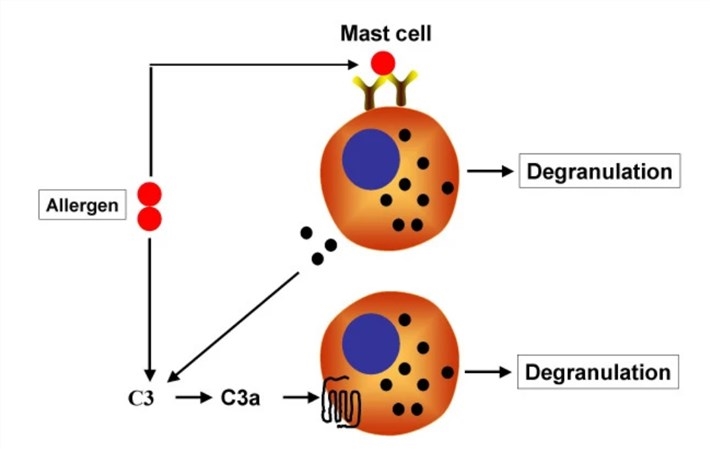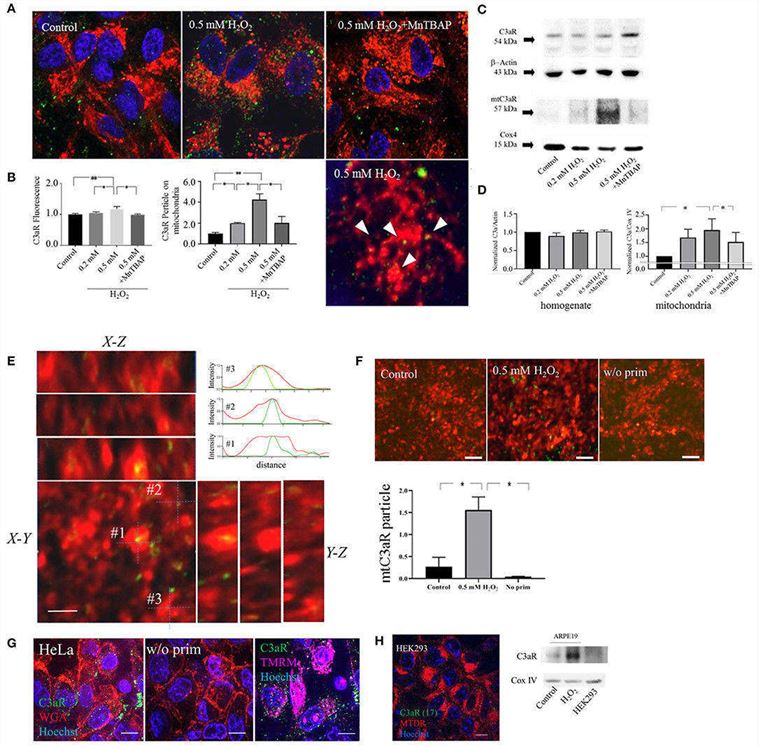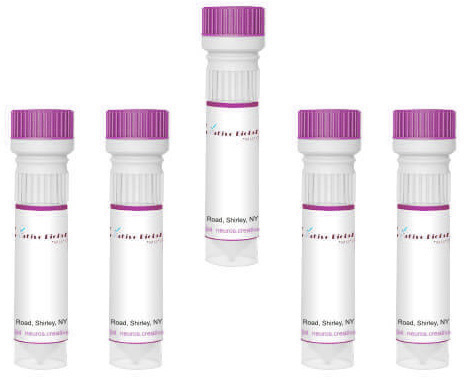Product List Background C3aR Functional Service
Background
C3aR, also known as C3a receptor, is a single polypeptide chain that spans the membrane seven times, belonging to the family of G-protein-coupled receptors (GPCRs). The receptor contains a large second extracellular loop of approximately 175 amino acids compared to about 30 amino acids for most GPCRs including the C5a receptor and FPR family. This loop has been revealed to play a role in C3a binding and receptor activation.
C3aR is primarily found on myeloid and lymphoid cells. It serves as a key chemotactic mediator in the immune system. C3aR interacts with C3a polypeptides (the best known as chemotactic and inflammatory cytokines) to facilitate the movement of neutrophils, monocytes, and macrophages to the site of inflammation, where they promote the phagocytosis of opsonized foreign molecules and altered self molecules. C3aR also acts as an immune checkpoint receptor. Complement signaling through C3aR expressed on effector T lymphocytes inhibits the production of the cytokine interleukin-10 (IL-10). In various inflammatory-related diseases, C3aR signaling exhibits a protective role. For example, C3aR signaling has been revealed to act as a potent regulator of ethanol-induced adipose inflammation in a murine model with alcohol-related liver disease (ALD). C3aR signaling has been also shown a protective role in the development of atherosclerosis through negative regulation of proinflammatory responses regulated by the C3a-C3aR axis and regulating the macrophage toward the anti-inflammatory phenotype.
 Fig.1 Illustrative representation of the hypothesized interactions between FcεRI and C3aR resulting in mast cell activation.1
Fig.1 Illustrative representation of the hypothesized interactions between FcεRI and C3aR resulting in mast cell activation.1
C3aR Functional Service
Creative Biolabs provides an extensive range of products related to C3aR, encompassing anti-C3aR antibodies, C3aR ELISA kits, recombinant C3aR proteins, and C3aR inhibitors. These meticulously crafted resources are essential for enhancing research projects focused on developing therapeutic strategies across various diseases.
 Fig.2 Confocal visualization and western blotting reveal enhanced mitochondrial localization of C3aR under oxidative stress conditions.2
Fig.2 Confocal visualization and western blotting reveal enhanced mitochondrial localization of C3aR under oxidative stress conditions.2
Researchers identified the anaphylatoxin C3a as key to immune response, where its receptor C3aR, commonly found on the plasma membrane, relocates to lysosomes under stress. Investigating oxidative impacts, they found increased ROS activates complement signaling, influencing mitochondria. Live-cell and Seahorse analyses showed oxidative stress did not alter overall C3aR concentration but increased mitochondrial localization via endocytosis. H2O2 enhanced C3a-mitochondrial co-association, with effects on mitochondrial respiration and calcium uptake, mitigated by specific antagonists. This process affects cellular functions, especially in cybrid ARPE-19 cells, relevant to diseases like age-related macular degeneration, highlighting the balance in complement signaling.
Creative Biolabs provides an array of specialized services centered on C3aR, encompassing detailed interaction analyses and auxiliary functional solutions, meticulously customized to aid esteemed clients in both scientific research and clinical endeavors.
References
-
Ali, Hydar, and Reynold A. Panettieri. "Anaphylatoxin C3a receptors in asthma." Respiratory Research 6 (2005): 1-6.
-
Distributed under Open Access license CC BY 4.0, without modification.


 Datasheet
Datasheet Fig.1 Illustrative representation of the hypothesized interactions between FcεRI and C3aR resulting in mast cell activation.1
Fig.1 Illustrative representation of the hypothesized interactions between FcεRI and C3aR resulting in mast cell activation.1
 Fig.2 Confocal visualization and western blotting reveal enhanced mitochondrial localization of C3aR under oxidative stress conditions.2
Fig.2 Confocal visualization and western blotting reveal enhanced mitochondrial localization of C3aR under oxidative stress conditions.2
